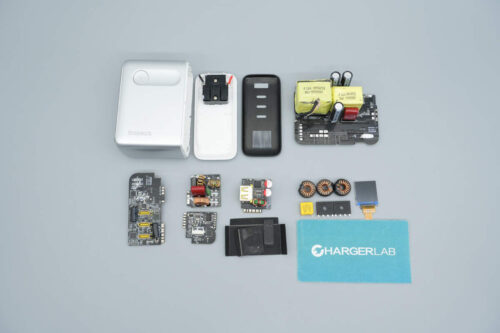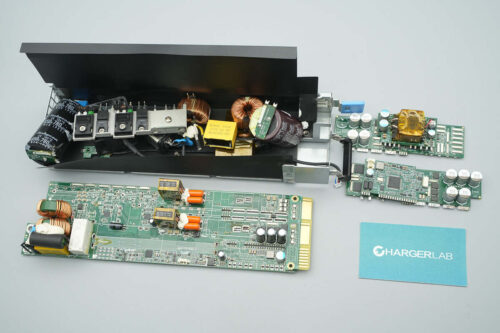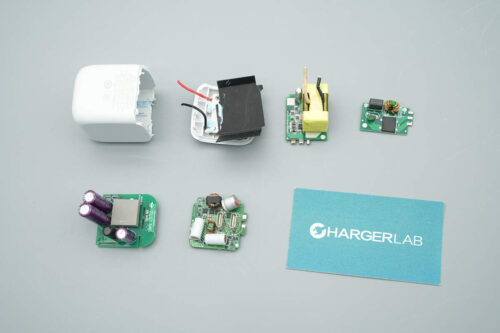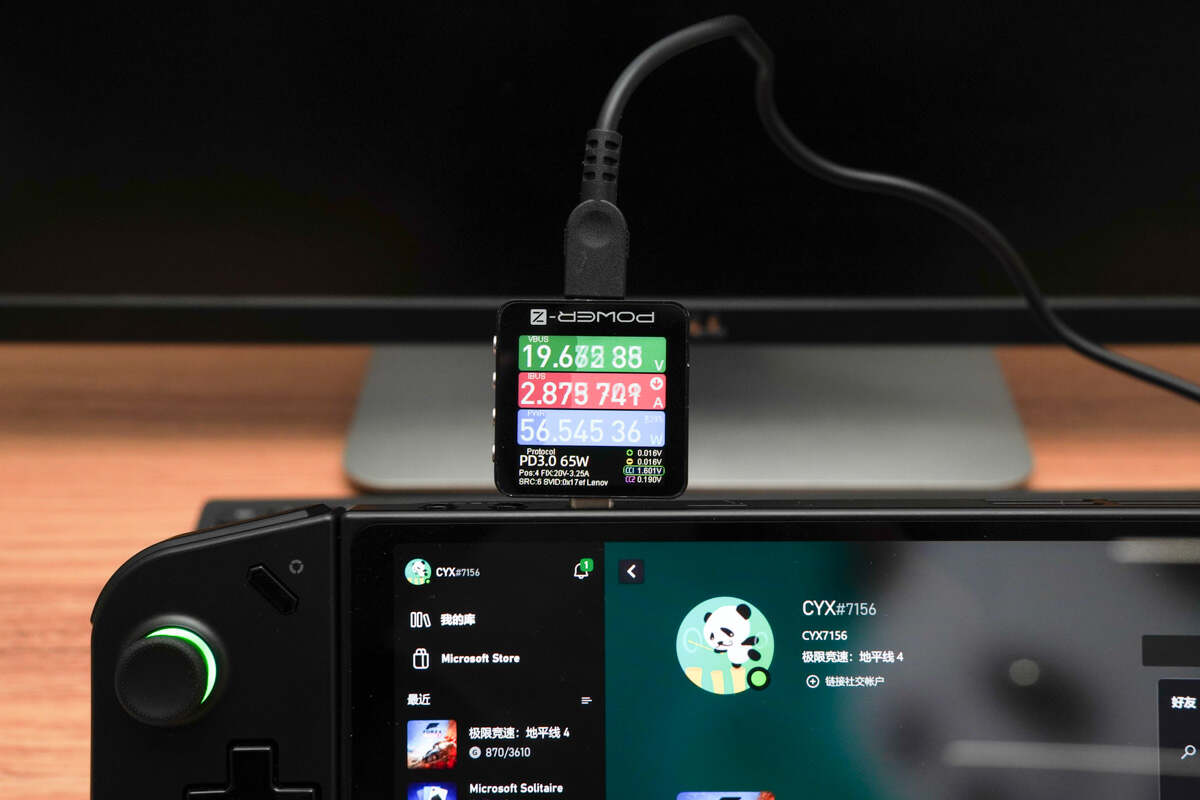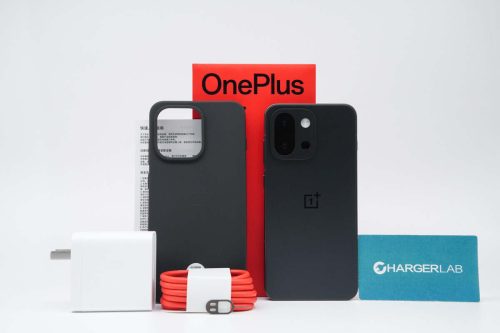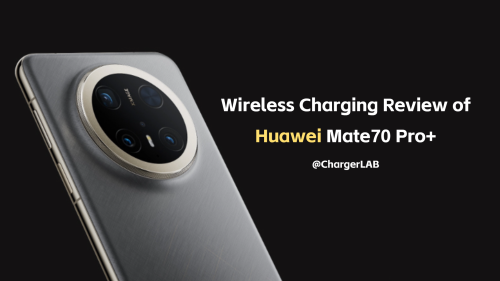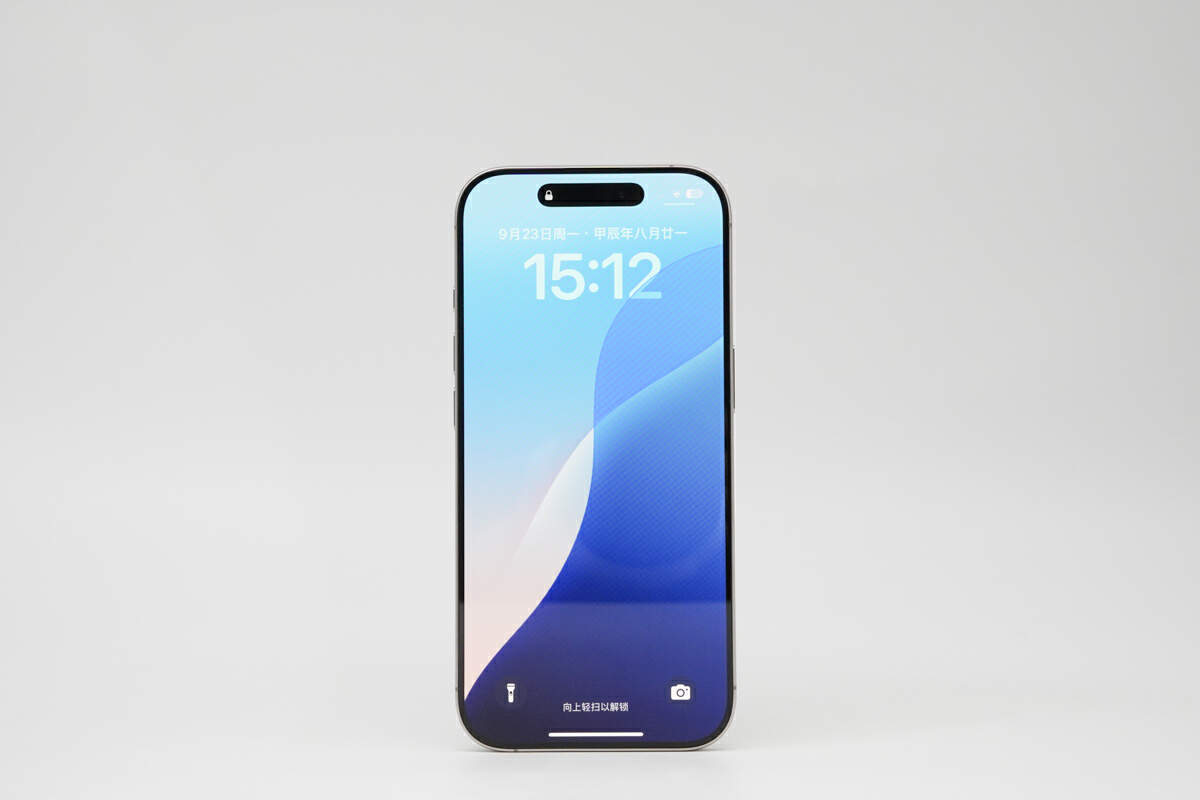Introduction
The all-new USB-C port integrated into the iPhone 15 series brings unlimited possibilities, whether it's for charging, data transfer, or many other aspects. However, the most significant advantage for regular users is that - you can now use chargers from your friends or your own Android phones!
However, some users reported to us that they cannot charge their iPhone 15 when using the charger of their Android phones. So we picked up some Android phone chargers to test it.
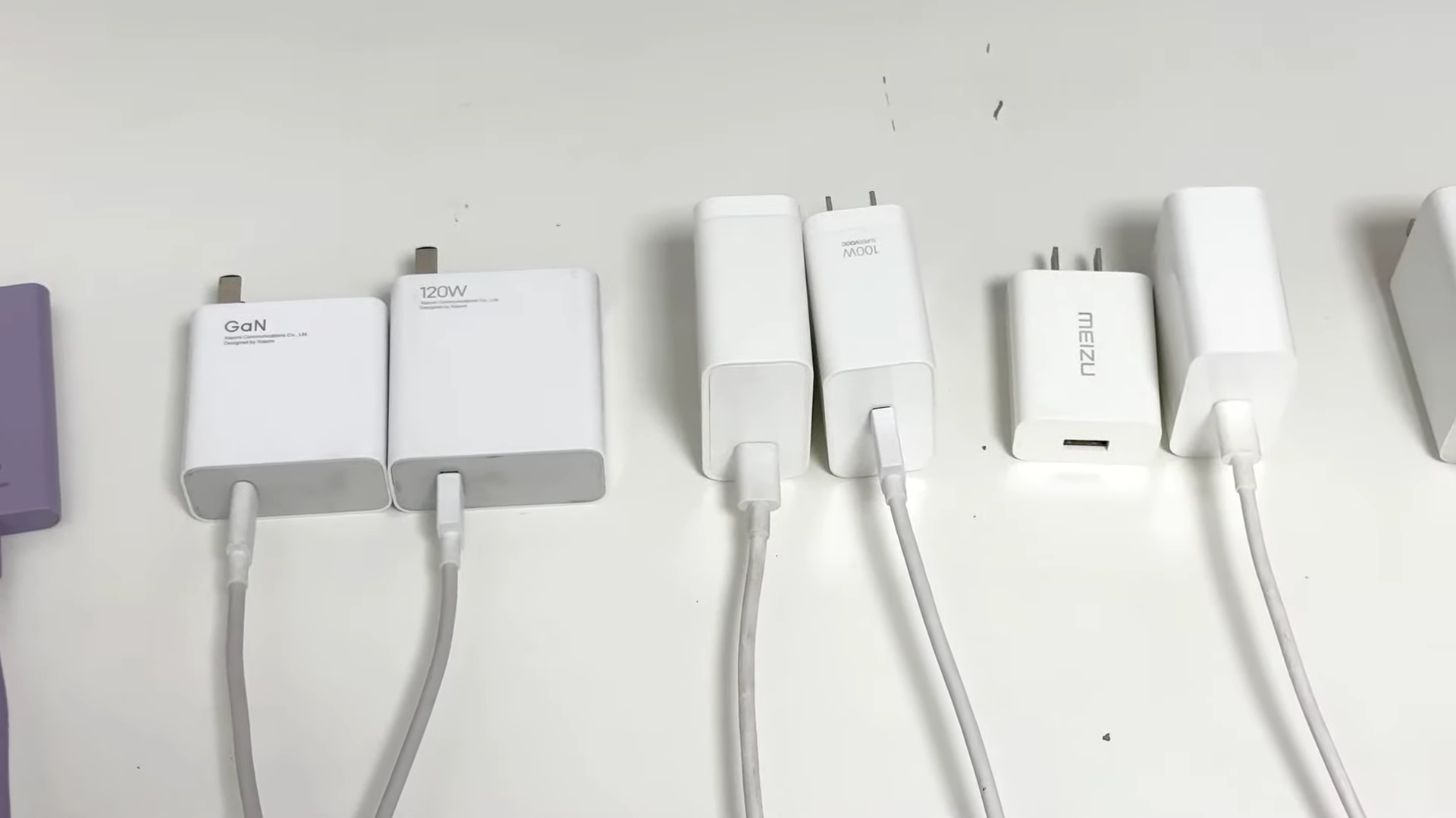
They're from Huawei, Xiaomi, Realme, Meizu and iQOO. To better understand this issue, we tested USB-C chargers, as well as USB-A chargers. And the testing cables are all original.
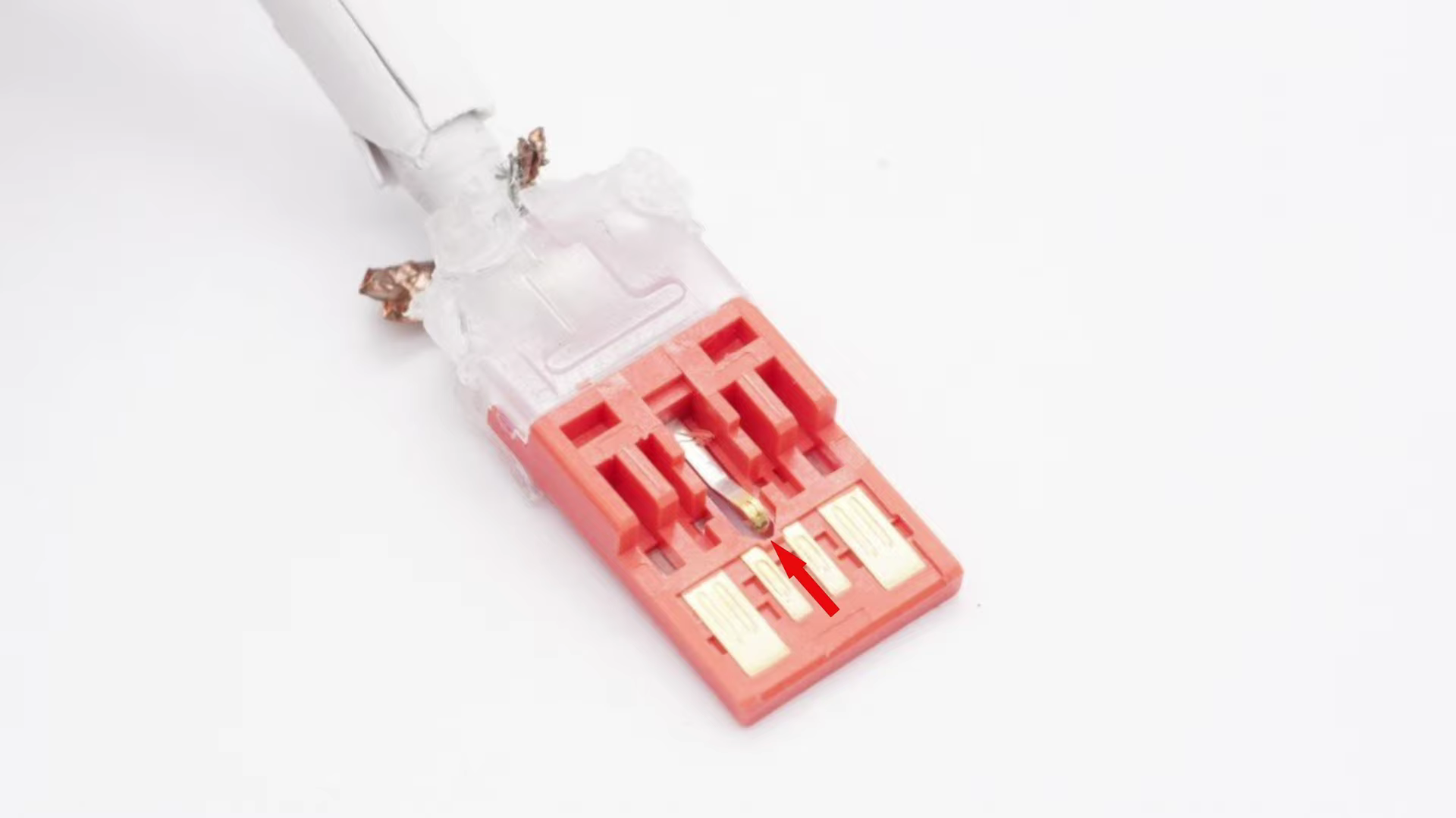
To support the PD protocol, most USB-A cables will be equipped with an additional pin.
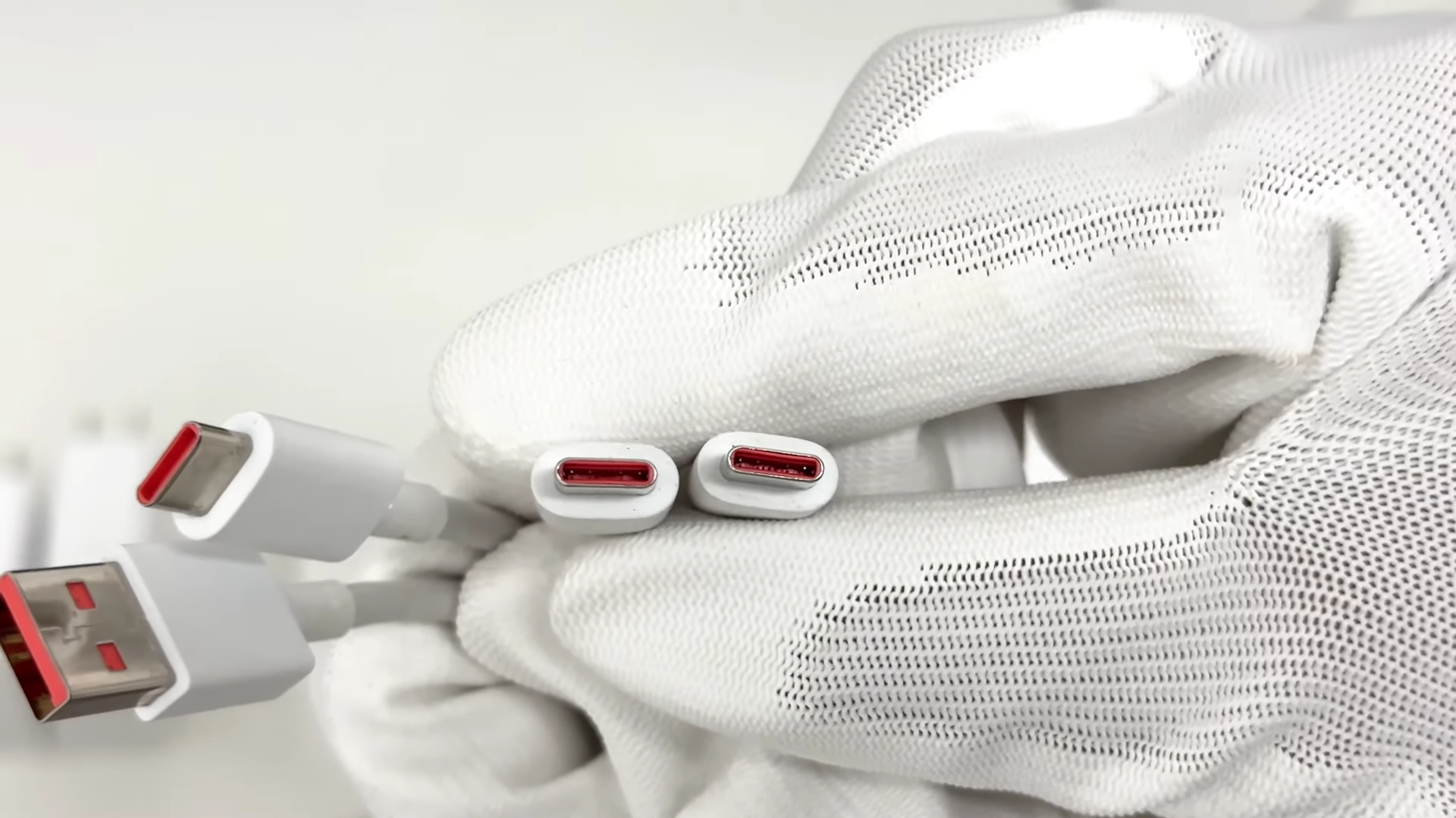
And to save costs, USB-C cables does not adopt a full-pin design.
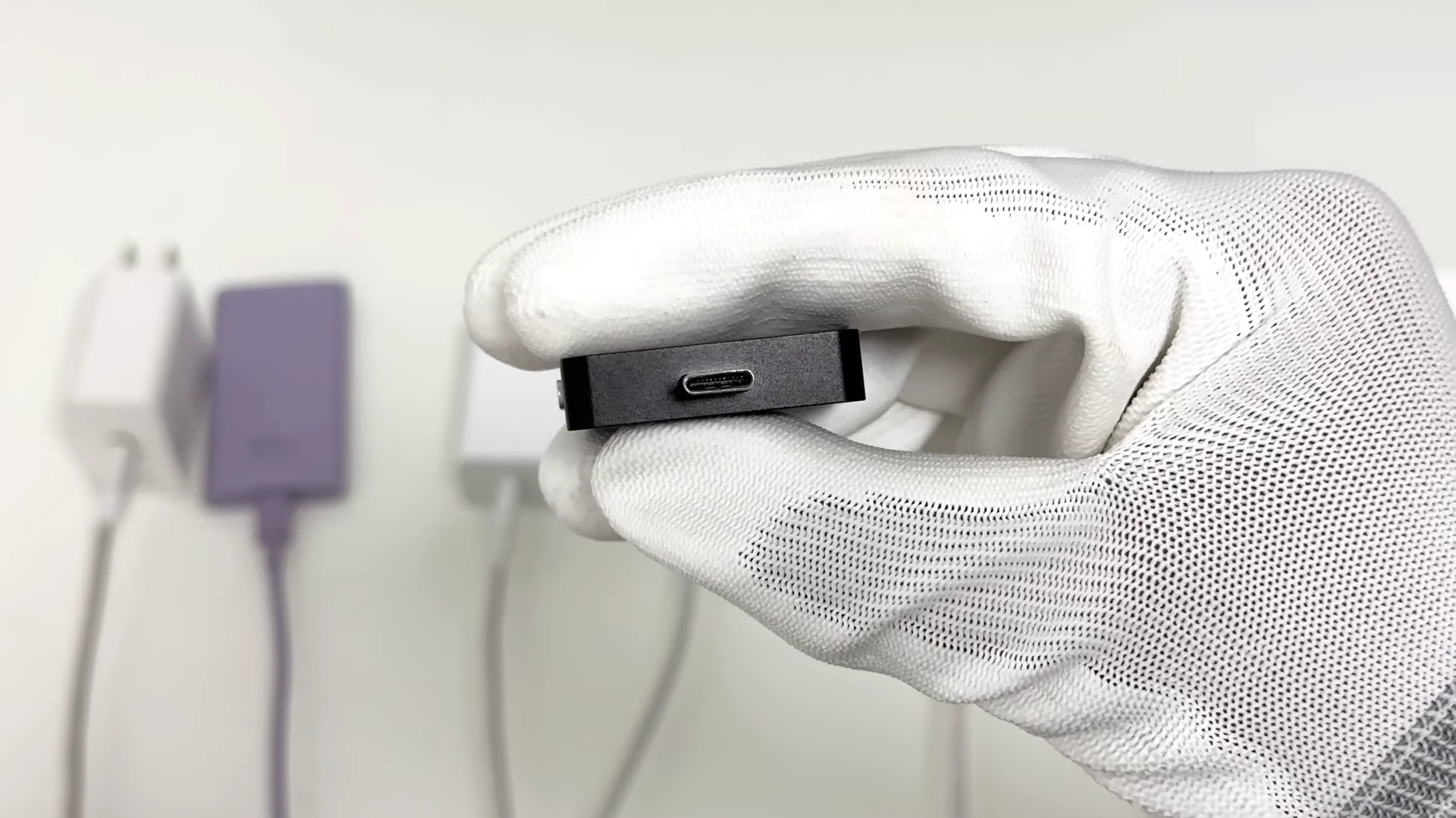
But you know, our ChargerLAB POWER-Z KM003C adopts a full-pin design. So we will test every single charger twice, with KM003C and without KM003C.
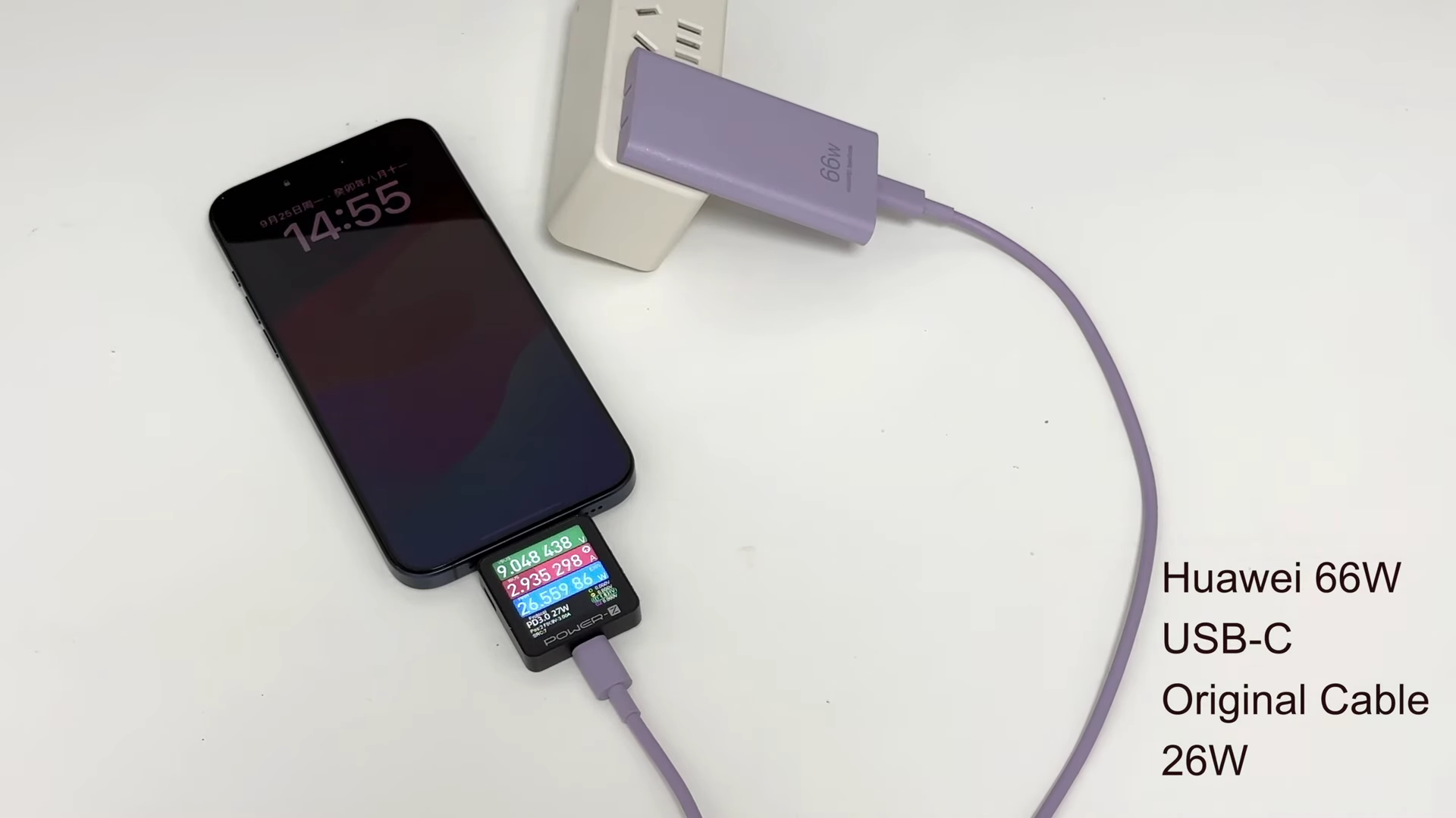
The first charger we tested is a Huawei 66W USB-C charger. It works very well. The charging power is about 26W.
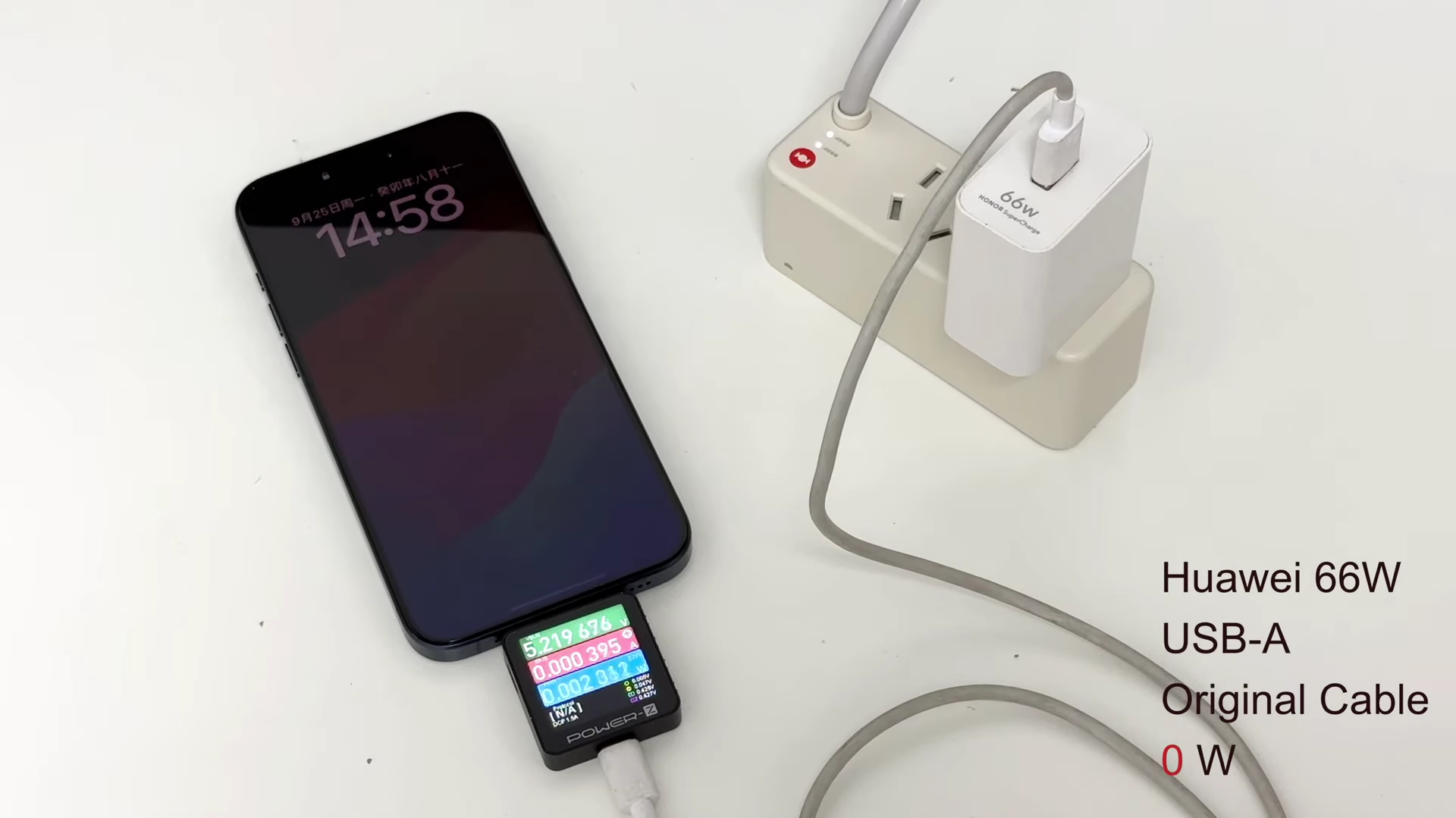
The next charger is Huawei 66W USB-A charger. When charging with the original cable, the charging power is indeed 0.
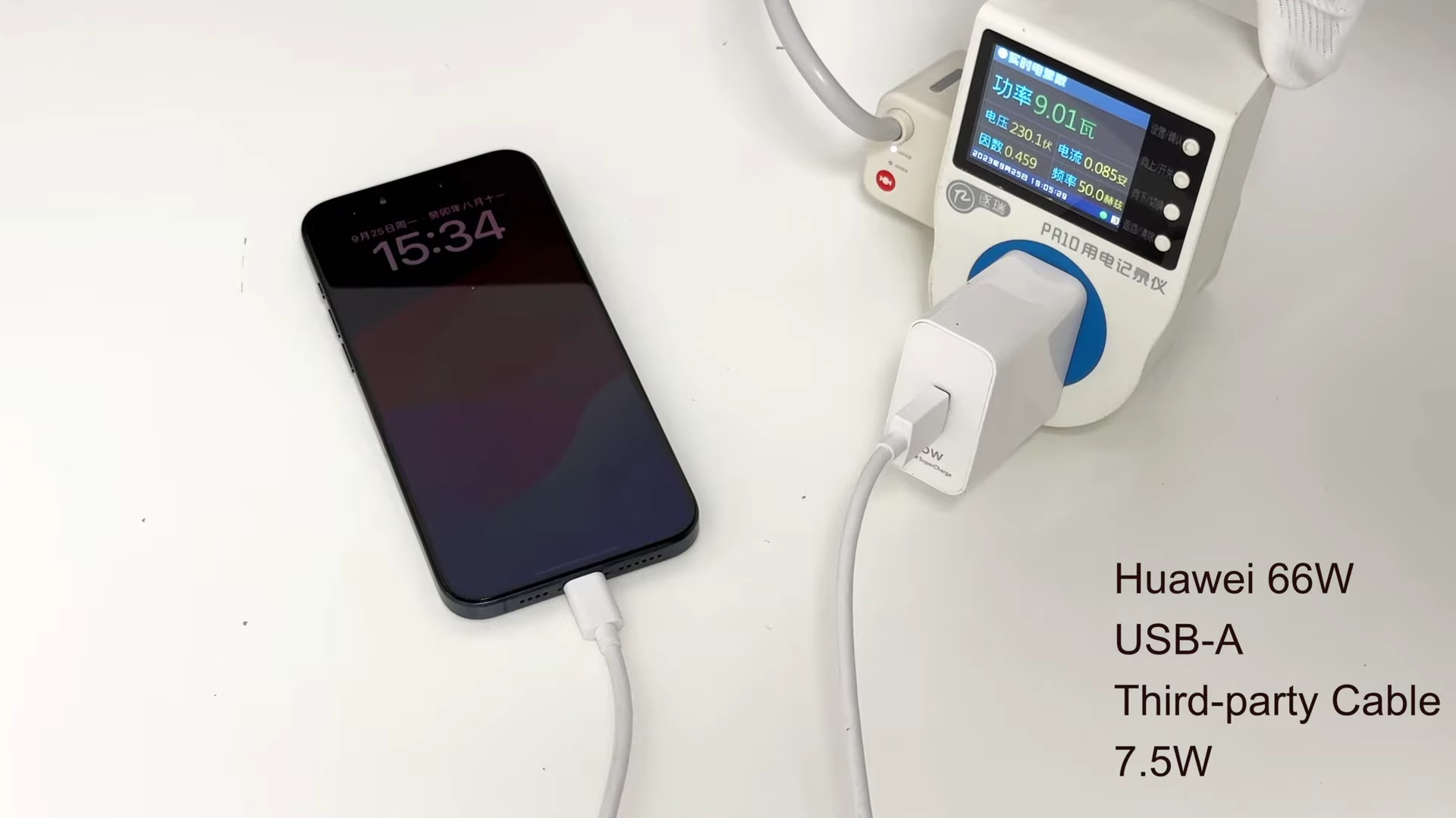
To find out why, we replaced the original cable with a third-party cable. The phone starts charging at a slow speed again but cannot trigger PD protocol.
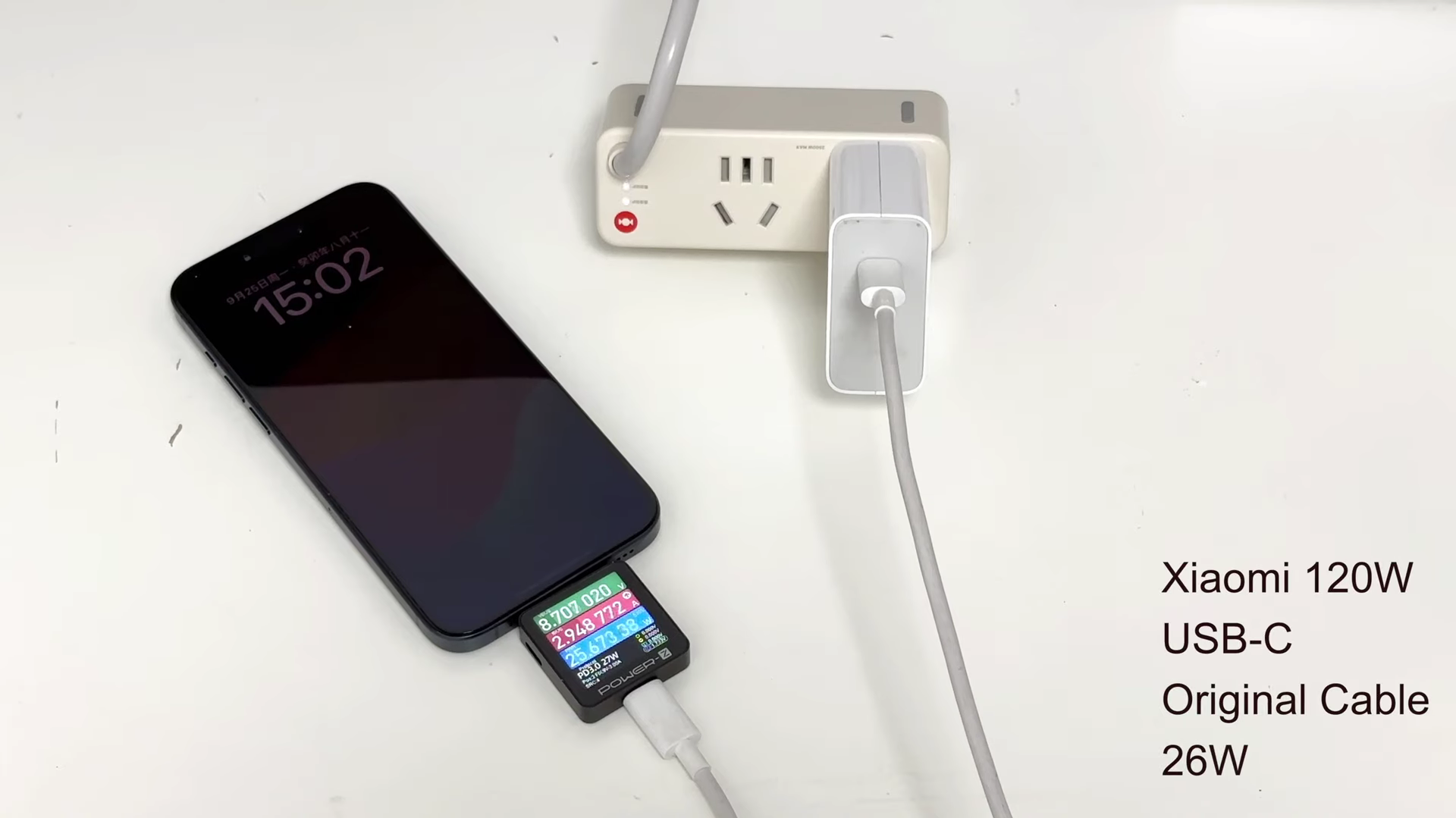
Then, let's see Xiaomi's charger. The Xiaomi 120W USB-C charger can successfully charge iPhone 15 at around 26W
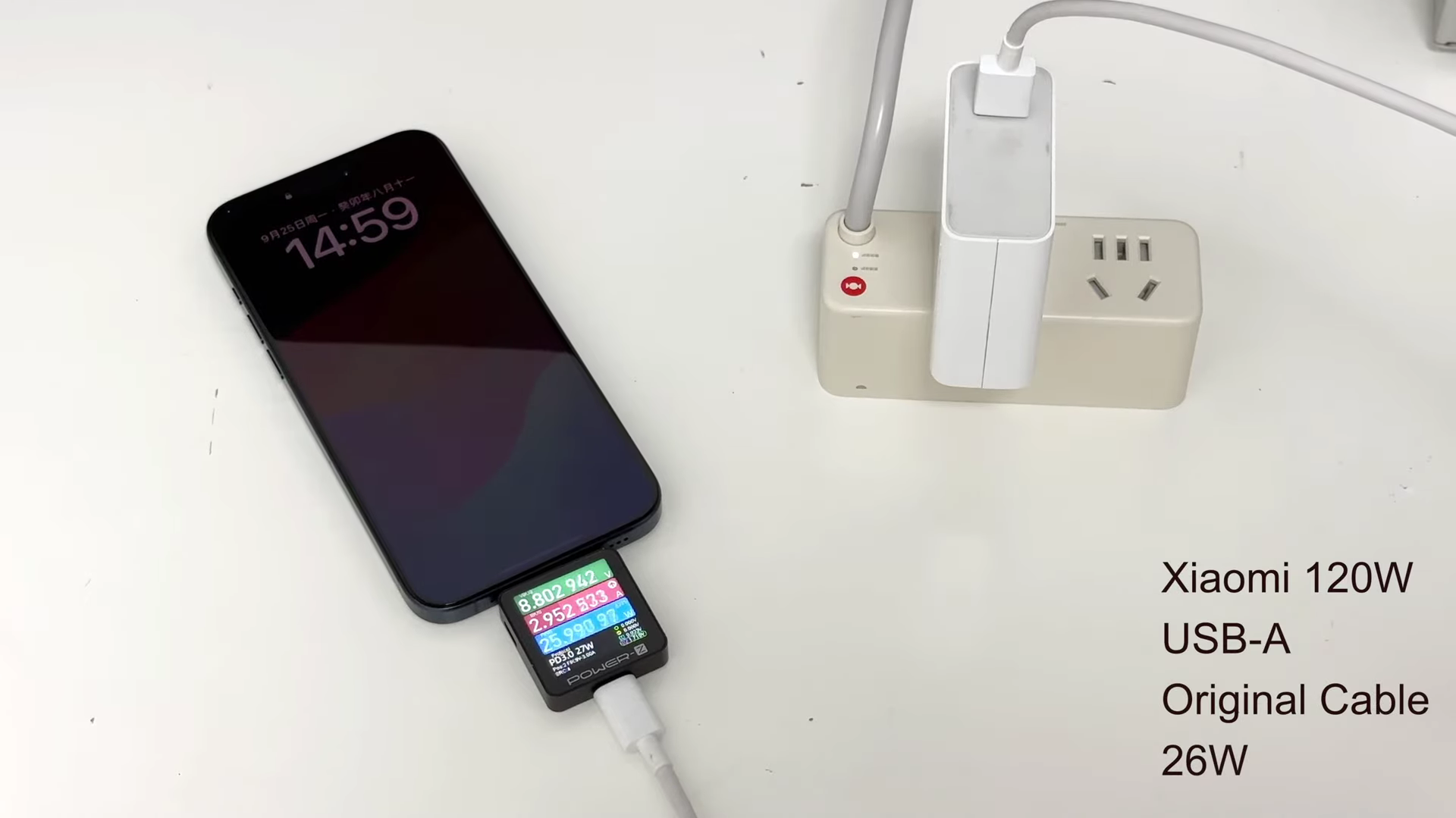
So is the USB-A version.
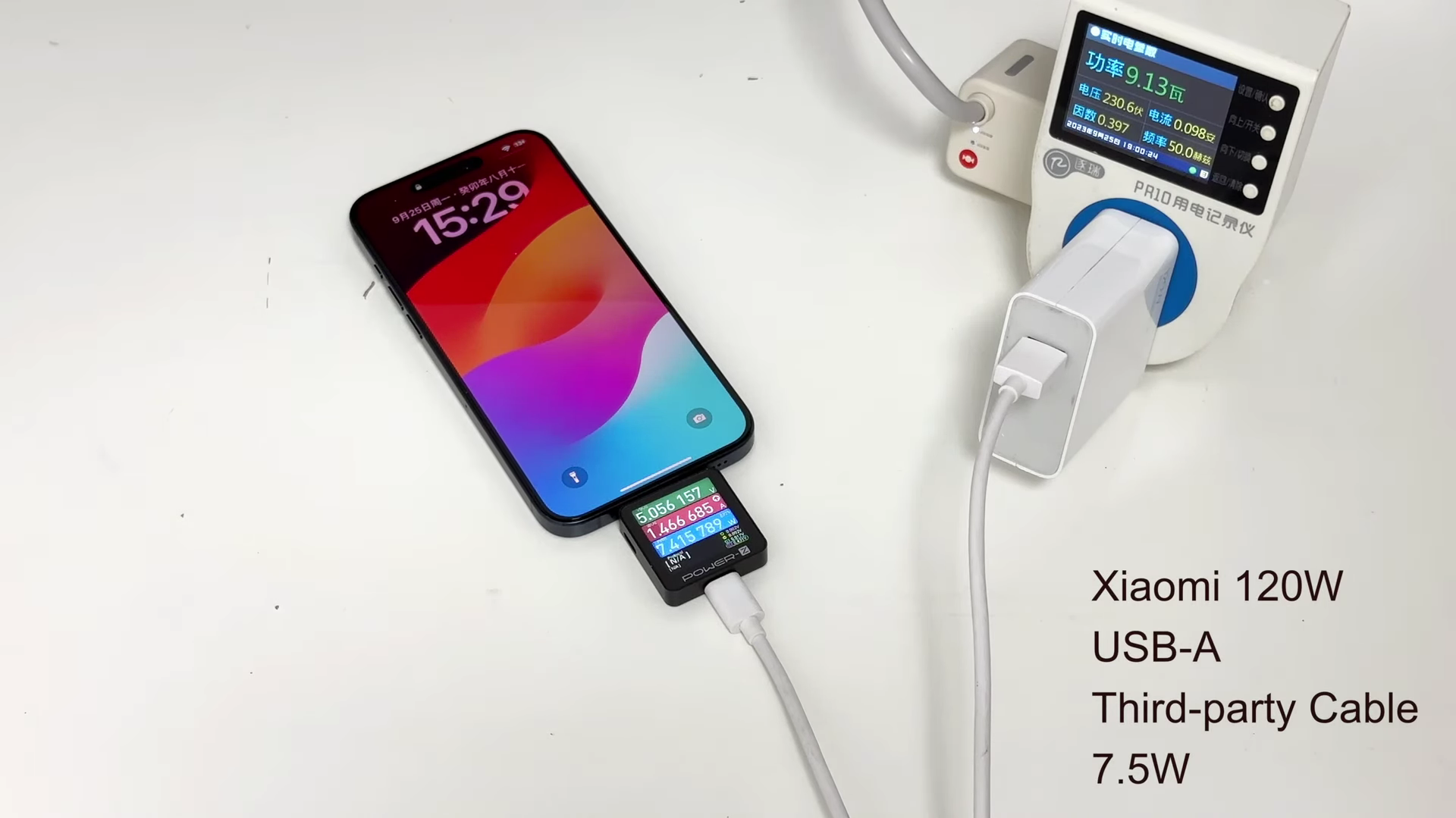
But when charging with a third-party cable, it cannot trigger PD and the power drops to 7.5W.
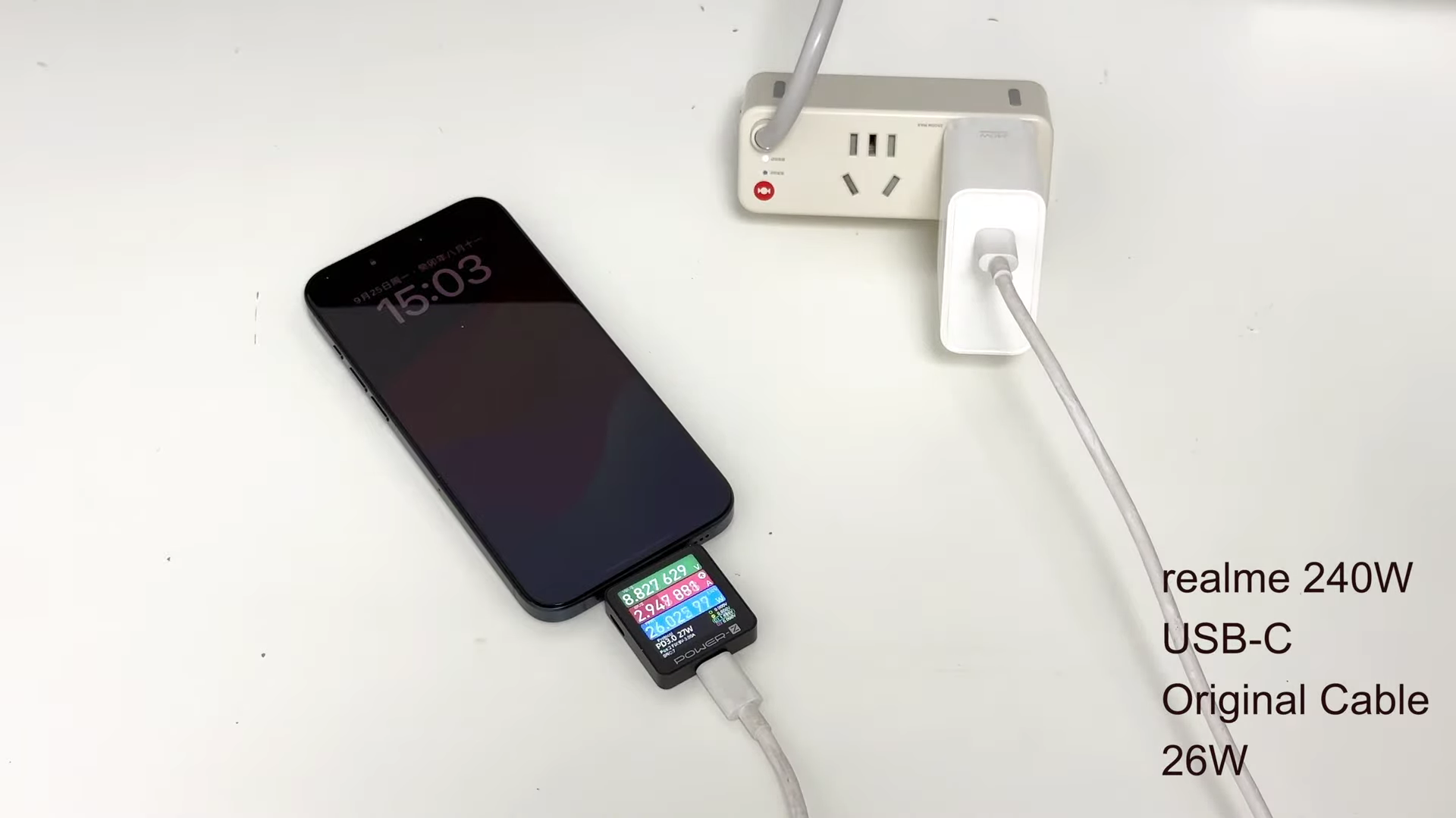
Next, let's test two realme original chargers. When using KM003C, the realme 240W USB-C charger can charge the iPhone 15.
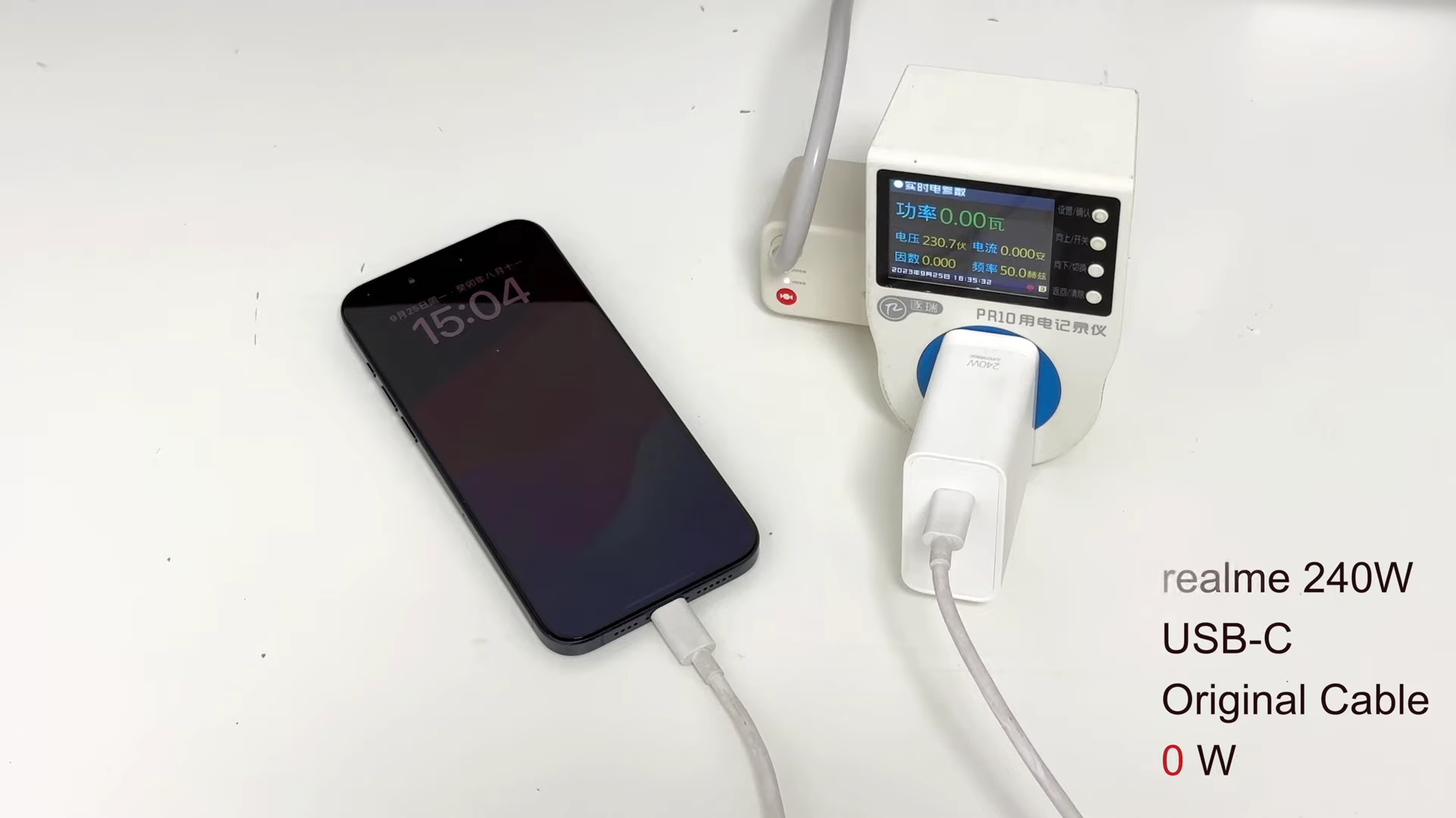
But it cannot charge the iPhone 15 if we remove the KM003C. That's pretty weird.
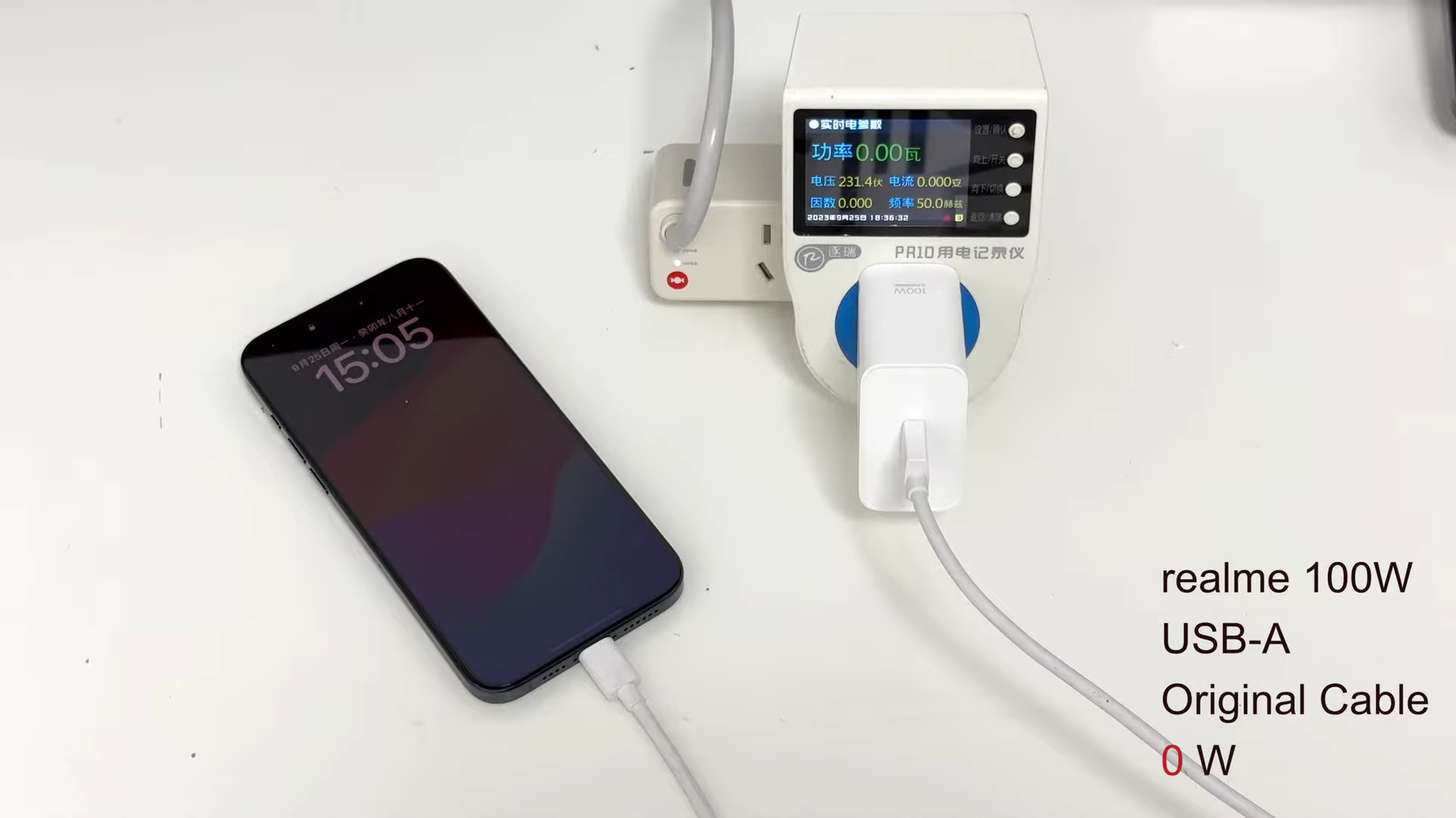
As for the realme 100W USB-A charger, it cannot charge the iPhone 15 when using the original cable.
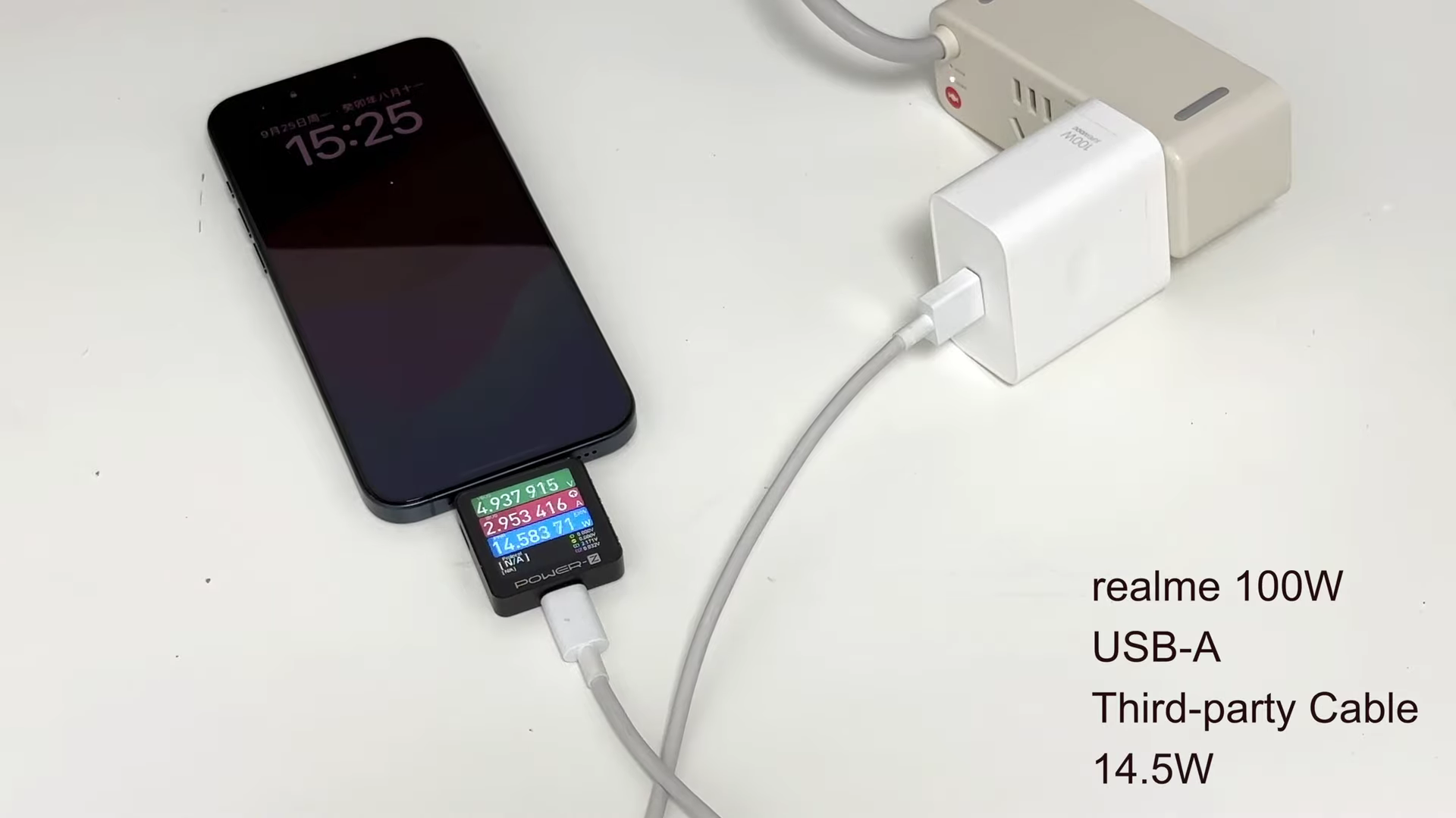
Like the Huawei 66W USB-A charger, it starts charging again after replacing with a third-party cable. And the charging power is about 15W.
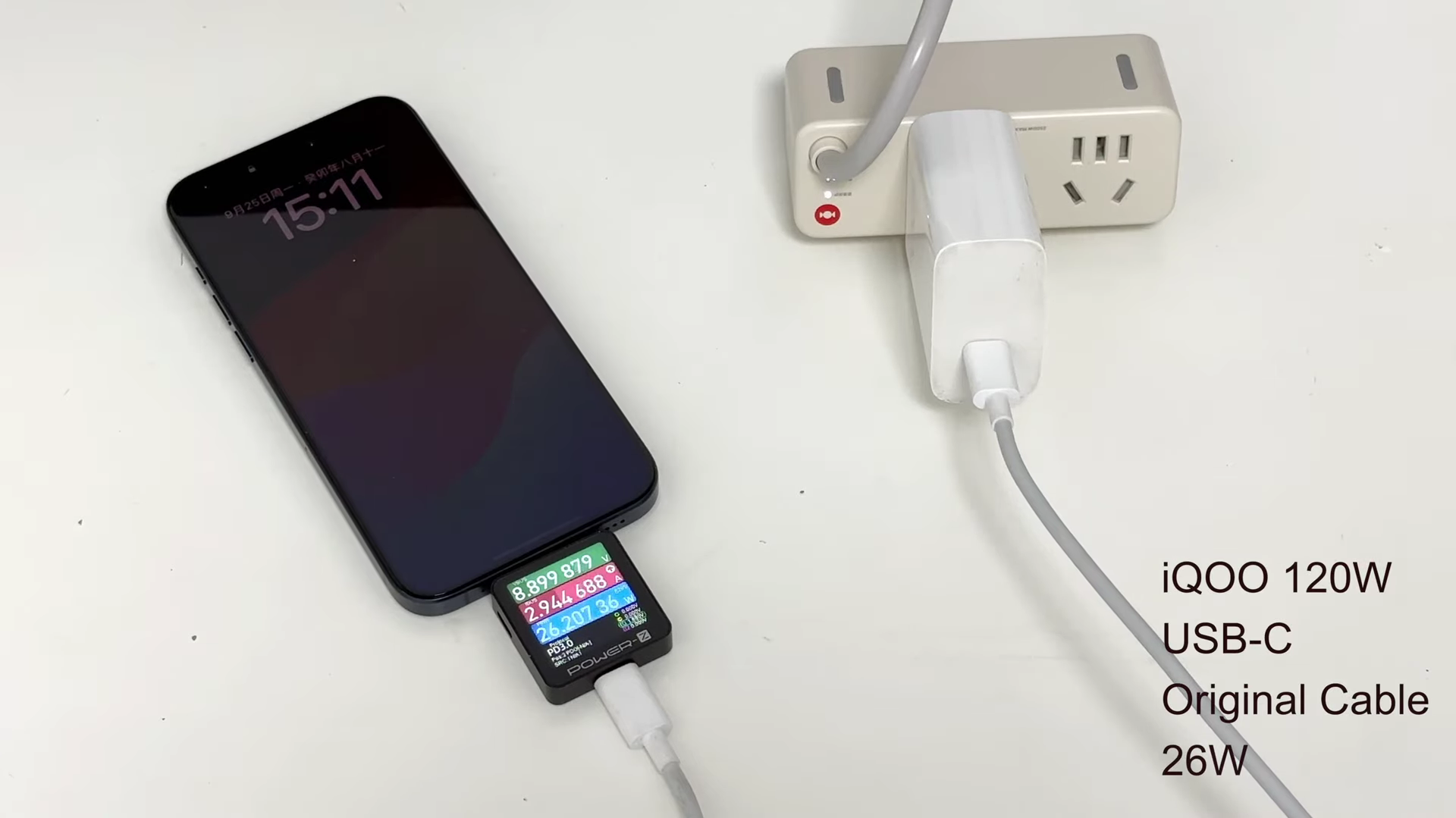
Then, let's try to charge iPhone 15 with the iQOO 120W USB-C charger.
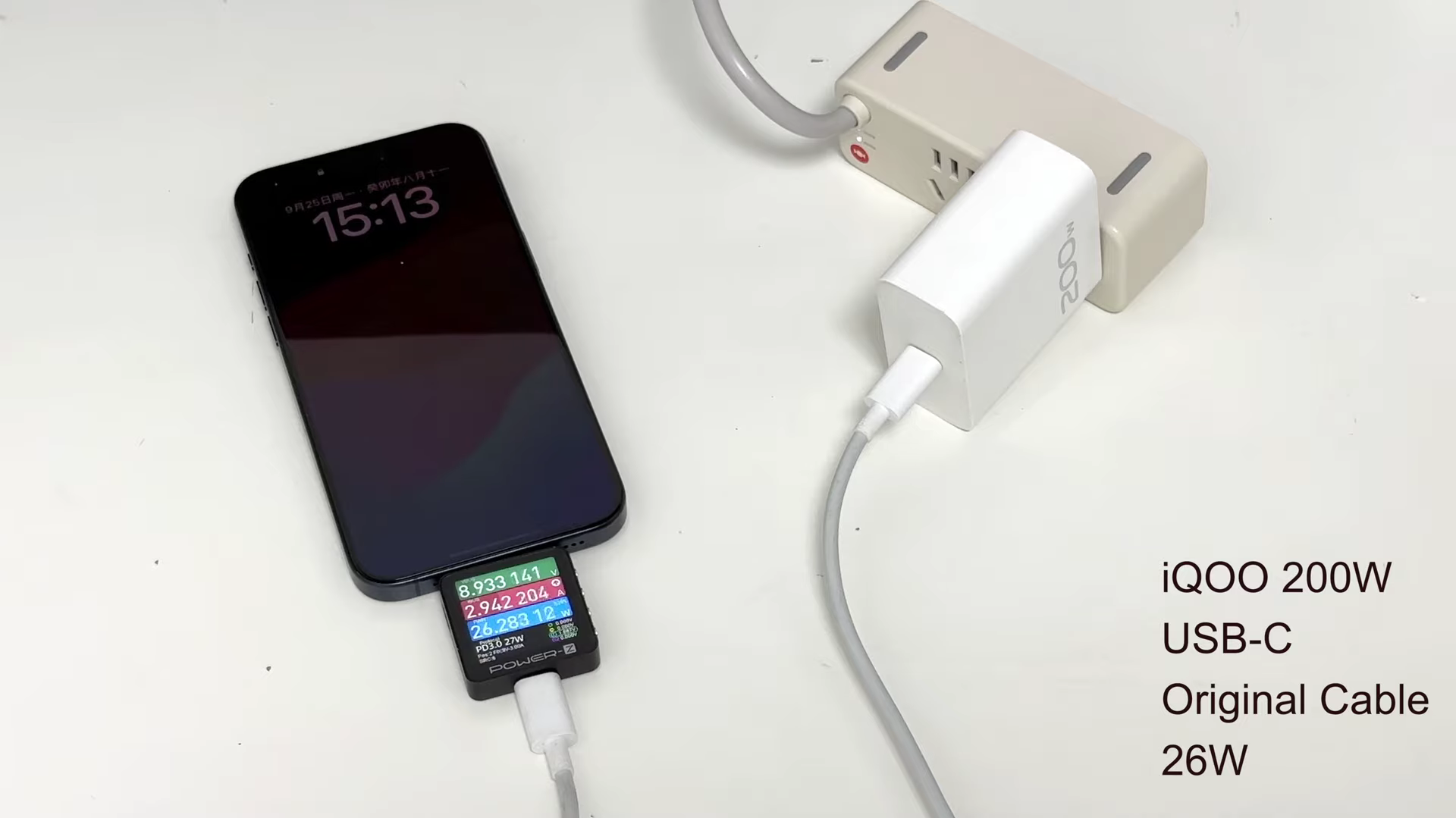
And the 200W one. Since both chargers can be compatible with 65W PD protocol, there's no problem when charging iPhone 15. The charging power is about 26W.
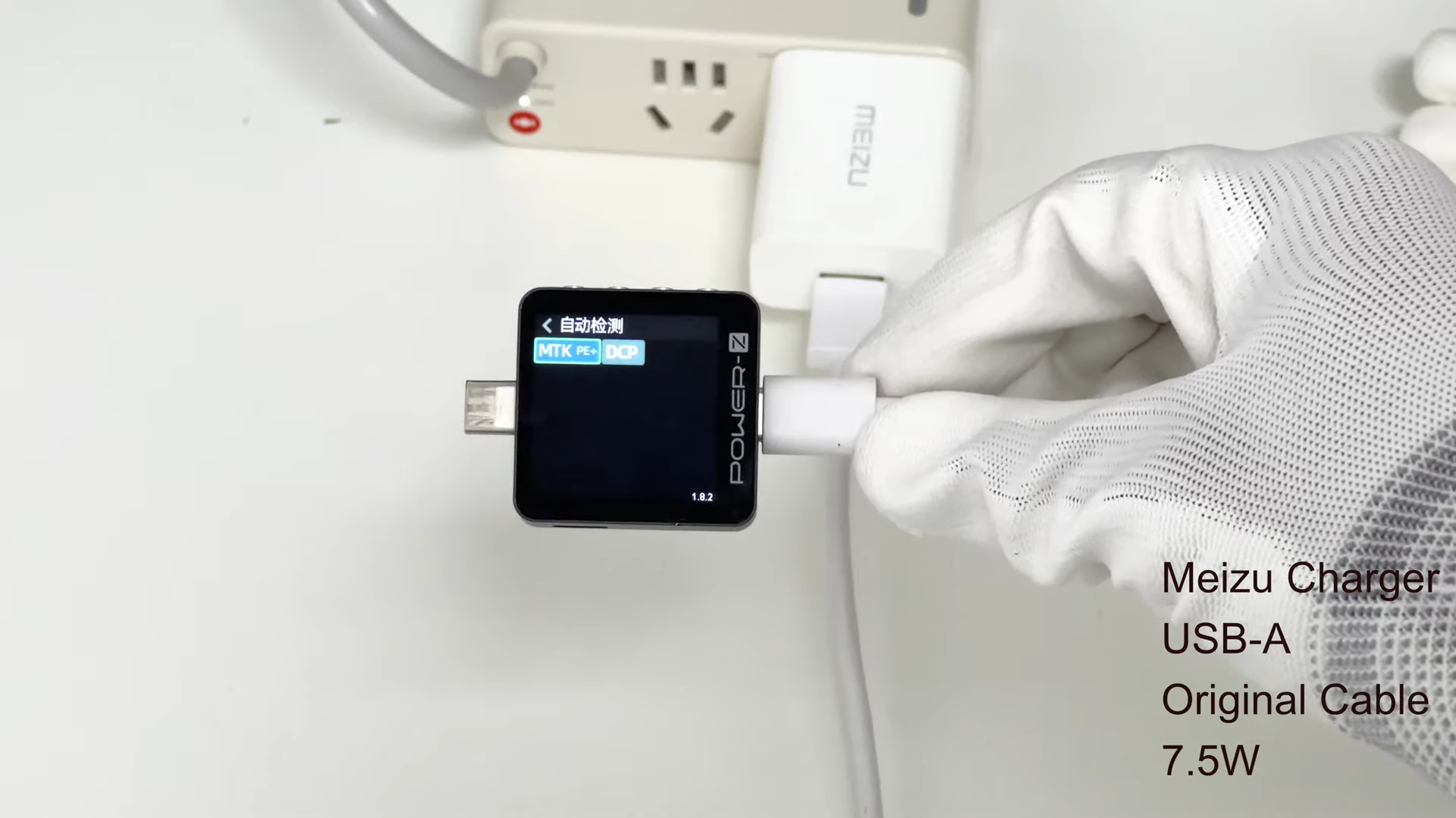
Finally, we found an old Meizu USB-A charger, which only supports MTK and DCP protocols. The iPhone 15 can be charged at 5V.
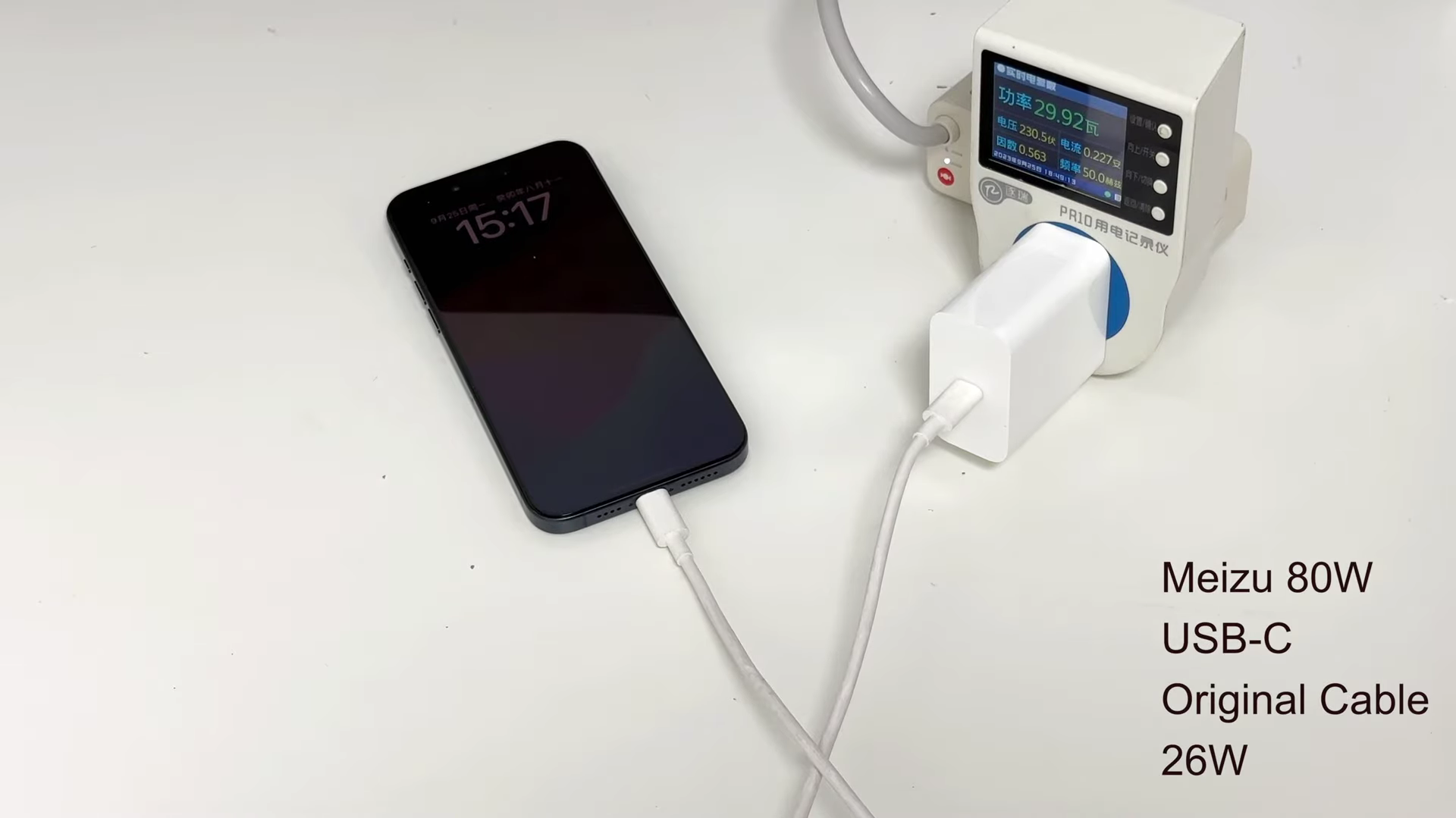
And the other 80W USB-C charger from Meizu can successfully trigger the PD protocol and can charge the iPhone 15 at a higher speed.
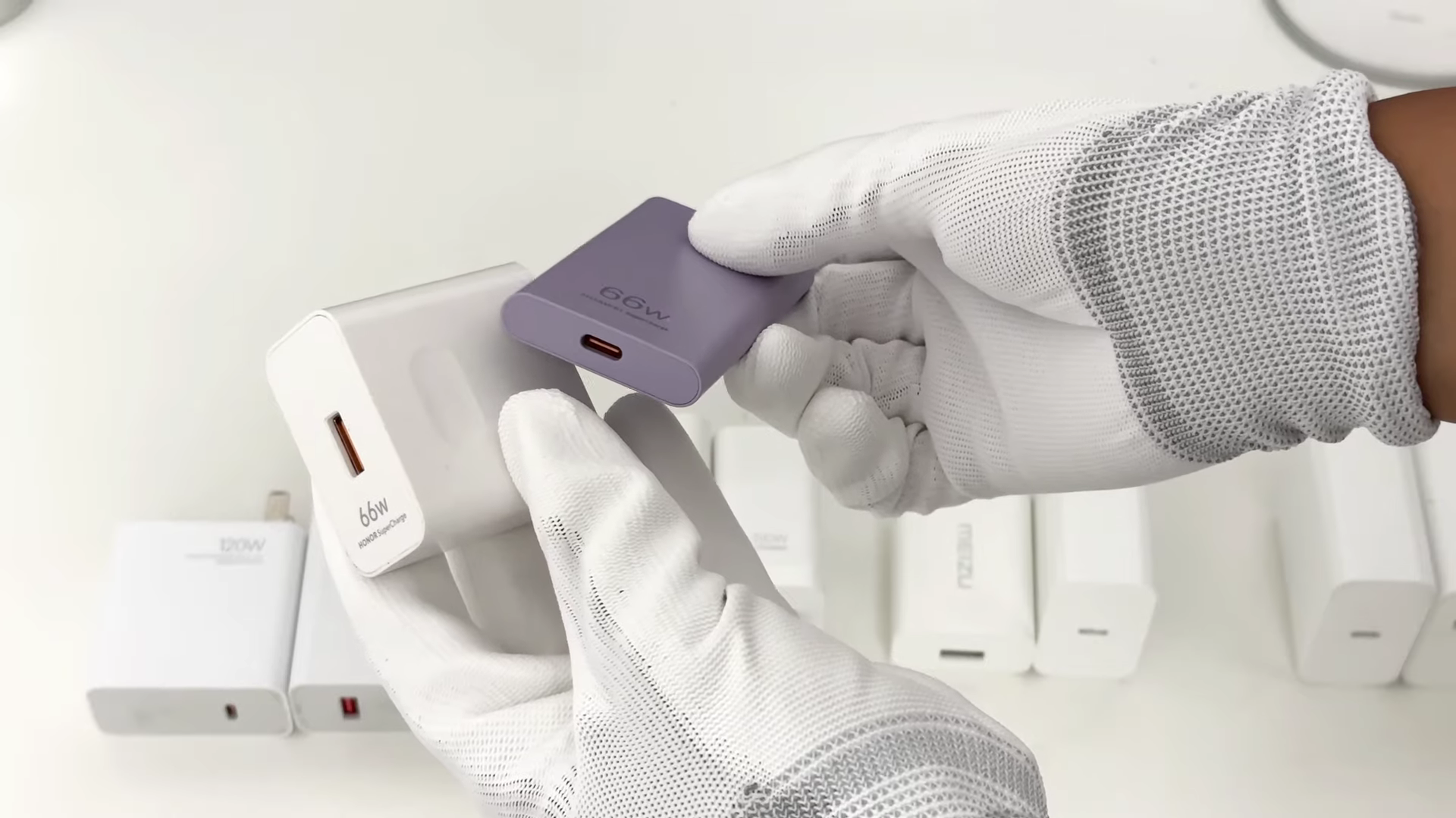
So, you can check the specs info of your Android phone chargers to see if it supports PD protocol. For the majority of USB-C PD chargers of Android phones, there is no compatibility issue when charging iPhone 15.
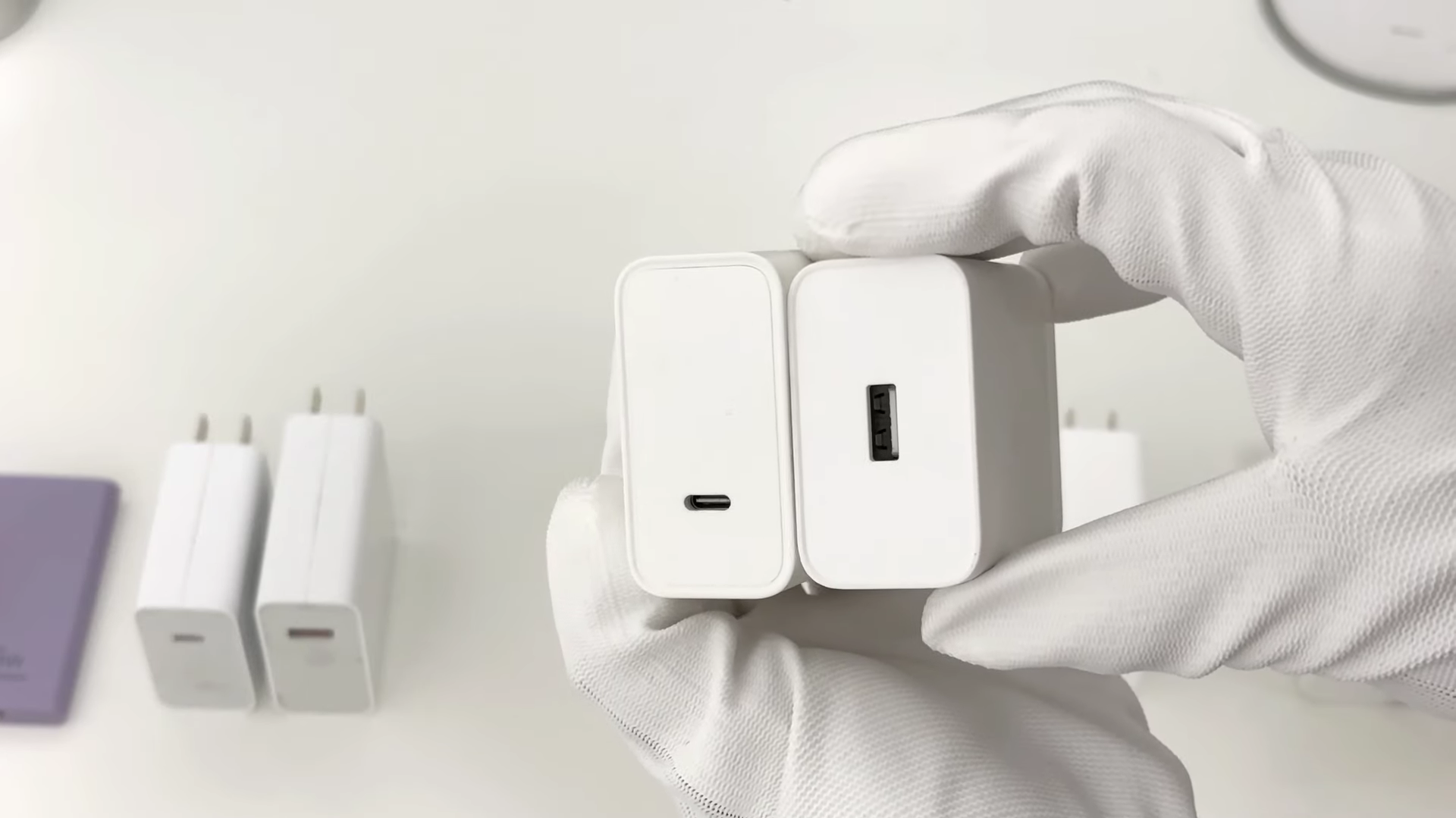
But if you want to use a USB-A charger, the charging speed will be very slow or it'll stop charging. If this happens, you can change the cable to trigger 5V and continue charging.
Summary of ChargerLAB
In a nutshell, if your charger and cable are from reputable manufacturers and genuinely support the PD protocol, it should work fine with the iPhone 15 series. Although some manufacturers have obtained PD protocol support for their USB-A chargers through an additional pin, based on test results, we still do not recommend using a USB-A charger to charge the iPhone 15.
Related Articles:
1. How Fast Apple iPhone 15 Pro Is Charged? - ChargerLAB Compatibility 100
2. Charging Review of iPhone 15 Pro Max
3. How Fast It Can Be? iPhone 15 USB-C Reverse Charging

